|
(This was first written a few months after my father died on Wednesday, August 30, 2022. It was submitted to a few publications and rejected each time. Perhaps I need to rest it here, invite it back into my own heart, and not seek anyone's approval but my own. May it offer some healing insights for others...)
It’s 1:45pm on an ordinary Wednesday in August. A time when children returning home from summer day camps are cooling down with orange or berry flavored popsicles. A time when the sun is lazily strolling through a clear blue sky, too warm and weary to move any faster. It’s a carefree time for most. But not for my brother. Papa is sitting on the sofa slightly slumped over, his eighty-one-year-old spine yielding like an old, soft coat hanger to the weight of end-stage congestive heart failure, kidney disease and Parkinson’s. His signature salt and pepper beret hangs low over his forehead, covering his eyes. After a few friends and relatives leave, my brother assumes he is just resting. Until he moves closer to tap Papa on the shoulder, and Papa completely keels over like a marionette no longer guided by higher hands. **** On Monday, two days before Papa dies, I receive a phone call from him. “I miss you.” His voice is magnetic, drawing me out of the embodied, grounded place I’m trying to reach. I hold the memories of this man’s significance in my life at bay; they are visitors I am not ready to confront. Right now, I’m at the gynecologist’s office waiting in an exam room to discuss treatment options for perimenopause. The appointment was rescheduled after I missed the last one visiting him in the hospital. “I miss you too, Papa.” The response manages to push its way past the conglomerate rock of emotions stuck in my throat. Seconds later, Dr. M rushes in like a whirlwind, eyes me on the phone, and backs out of the exam room. Clearly my phone call is more important than her services. I’m not sure I agree. “Papa, I need to go. I’m at the gynecologist’s office. Call you later.” Tenderness for my own wellbeing, my own healing process pulls me away from the call. Perimenopause is changing my inner landscape so much, that I feel like a foreigner inhabiting a strange body. But the force of guilt is equally strong. My nervous system is flooded with intense feelings, sacroiliac joints burning from prolonged sitting with Papa at the hospital for several hours and at my brother’s place now that he is home on Hospice. Papa is still dying. After several hospitalizations for congestive heart failure, his heart is more susceptible to fatal arrythmias that can only be managed in an acute setting. As much as Papa wishes to prolong his life, quality of life outside of a hospital with loved ones is most important to him. My thoughts are interrupted by a soft knock on the door. Dr. M reenters the exam room. I guess I’ve decided to stay. It seems like a logical decision, and my heart yearns for more guidance. As I’m driving home from the appointment, I try to call Papa back. My sister-in-law answers. “He’s sleeping.” “I’ll try to call him later.” ***** I work on Tuesday and Wednesday to see a backlog of patients trying to catch up on two years of delayed medical care since the onset of COVID. They’re still afraid of the virus and all its variants, but cancer, complex pain, and confounding mental illnesses are strong competitors. My heart feels even more fragmented trying to meet everyone’s demands. Am I caring for anyone successfully? The opportunity to call Papa later never comes. I am not there. I don’t get to say goodbye. “Well, whose fault is that?”, my inner critic chastises. “You’re SO selfish, always putting your needs before others, even the man who raised you like his own daughter. You left your cousin brother alone to face his death. How could you?” Another voice tiptoes into the conversation. This one feels like it’s coming from an older, wiser place. It might even be ancestral. “Dear One, it’s true you were not physically there in his last moments. You were consciously caring for so many depleted beings. Can you remember the times you were present to care for Papa in meaningful ways?” I don’t see Papa again until my brother, sister-in-law, and I dress him in traditional white clothing at the funeral home for the final viewing before cremation. His skin is oddly smooth from the effects of funeral makeup, but it can’t hide the slight tension in his jaw, as if he is still objecting to this unsolicited outcome. Memories that were once conveniently sequestered can no longer be held back. A shy eighteen-month-old girl arriving with her mother from India after her parents separated, trusting a strange man (her maternal uncle) at the airport to embrace her as one of his very own. Frequent trips to Yosemite and other national parks, weekend trips to Golden Gate Park and Ocean Breach in San Francisco where Papa instilled a deep reverence for the natural world and Gandhi’s principle of compassionate action in me. The time when he drove down from San Francisco to Los Angeles in my gap year between college and medical school, because I had contracted tonsillitis with a nasty secondary allergic reaction to the antibiotic, and I had begged him to come. Flooded with guilt and grief, I question him silently. “Papa, am I worthy of this rite?” His demeanor conveys neither judgment nor approval. ***** The choices we make can restore or haunt us. Sometimes it’s not so black and white. I still see Papa’s face, hear his voice in the pleas of my dying patients. “Help me!”. Sometimes I recoil in fear and overwhelm, forgetting how to access the spirit of healing that extends beyond each exam room. Sometimes I stay with compassionate courage and fierce tenderness, softening the boundaries between who is doctor and patient, who is parent and child. Most days I’m learning to navigate the shifting landscape of change and loss without a clear road map, assuaging guilt with self-forgiveness, and caring for myself and others in significant ways. Mindfulness teacher and author Jack Kornfield said, “If your compassion does not include yourself, it is incomplete.” As Papa once told me, even Gandhi needed a day of rest and silence. emptying the space of preconception new ways of looking are possible When things change, I get scared. Expending more energy on what class I can attend, what book I should read, or who I should talk to, I forget the invitation to just rest in uncertainty. There is also tremendous compassion for how hard it is to feel windy thoughts jarring the mind, waves of painful emotions crashing against the shores of a tender heart. A few days ago I was driving home from work. Heavy winds howled like banshees shaking the small electric car to the core of vulnerability. I thought I was going to die. Arriving home in one physical piece, but many psycho-spiritual pieces, I tried releasing the visceral threat through words and tears in the arms of my loving, attentive partner. I still felt broken. I had no control over so many things: the body changing in perimenopause, friends and colleagues having meaningful plans that did not include me, miscommunication with my mom and teenager, patients and families who were not heeding my recommendations. Yet, the following images arising in different meditations have offered some comfort and clues along the way. 1.) An image of mysterious eyes crying colorful streaks of tears that veil the face. Allowing rivulets of difficult emotions to flow through the heart space can be beautiful and meaningful. 2.) An image of a woman placing hands on belly and heart, as if the body were a stringed instrument. Her hands feel the vibrations of sacred music from within, her fingers strumming along to create/discover more. 3.) An image of wind and waves threatening to break a protective structure shaped like a rib cage encasing a multifaceted jeweled heart. Sensations of fear and doubt arising as the jeweled heart smashes against its protective walls. As I grant autonomy to the heart, reverence and trust arise in the process, as well as wisdom and courage to love and be loved. 4.) An image of a mind cluttered with preconceived ideas of past experience. I wonder what it might be like to perceive experience with humility, soft and elastic edges, with the enthusiasm and wonder of a child trusting in benevolence. New ways of looking are possible. **** When things change, I get scared. Sometimes I even want to hold onto this writing, these images…as if they are a talisman to protect me from uncertainty. Then I remember the true nature of trust. As self, other, and world change, so will words and images. The deepest letting go is letting go of it all, trusting the next words, the next image, the next stepping stone to appear when it feels impossible to cross the floods. My father is in the hospital. So many old demons are resurfacing. I feel weighed down by the pandemic and perimenopause. Still, there is something more… Faith is the full moon on a dark night laughing and crying with wonder, the circle of experience held in a tender glow of miracles and mystery- no parts left out. (Inspired by Izumi Shikibu) On a walk at Calaveras Big Trees National Park, the park ranger paused to pay homage to two giant sequoias that shared the same trunk. The trunks were originally separate, and fused together after a fire for mutual benefit and survival. I thought of my mother and daughter, how the umbilical connection was severed between us at birth, how the sacral, sacred burning in my body was a sign. I reflected on all the beings I have pushed away on this camping trip and beyond, the yearning to share the same base, something tender beyond ideas of a separate self. In meditation, the image of the conjoined sequoias arose, inspiring metta for my teachers, for me, for my mother and daughter, for all the beings at camp, and beyond. It wasn’t my body-heart-mind responsible for such vivid and vast imagination, but tapping into a larger, loving life force inherent in all things. Listening to the bell resound at the end of the sit, I was clinging- to the bell, the sequoias, the feeling, fearful that I would walk back into a black and white world where beings scurried frantically around like mice to make meaning. I will continue to disagree with others and feel the pain of separation. I will also persevere in tenderness, beauty, and Soulmaking. It’s what I was born to ‘do’, and who i already am. (Listen to audio version here) (If you would like to listen to the audio version of this talk, click on the link above.) The picture changes. Have you noticed this? People, places, things I’ve loved and wanted to hold on to are no longer the same. Family pictures that we took when my daughter was a baby are different now. She’s no longer a cute little cherub, but a tall, lanky teenager complete with acne and attitude. The picture of who I wanted to be as a mother was so radically different than who I actually was. Instead of having my shit together and nursing my daughter lovingly, I looked like I hadn’t slept for days, felt irritable all the time, blamed anyone and anything in my way (especially myself), and couldn’t breastfeed beyond about 6 weeks. For those of you who have ever been first time parents, you know it’s challenging. Even if you haven’t been a parent, anything you take on that is new and unfamiliar can be difficult: adopting a pet, starting a new job or school, caring for an aging family member, losing a job, moving to a new place, a new medical or psychological diagnosis in you or a loved one, and so on. But stress, discomfort, dis-ease, is not just about meeting moments of difficulty in life. We all face challenges. What makes certain ones more stressful than others? 2600 years ago, the Buddha had a word for stress. In Pali, the language spoken by the Buddha in India at the time, the word is dukkha. Just living this human life, we know that pain is inevitable. But the added stress is optional. There’s a saying that illustrates this point well: pain x resistance = stress. If pain is inevitable, then what adds to the stress? It’s our resistance to what’s happening moment to moment. The desire to hold on to the way my body used to be in less discomfort and able to do certain yoga poses, the aversion to burning, searing, aching, throbbing sensations in my left gluteal muscles, sacroiliac joint and right shoulder, the delusion that none of this should be happening, that I should be able to fix it, that this experience of pain is unique to Moi and no one else has ever felt this way. What are you currently holding on to in your life? What are you pushing away? How are you daydreaming or misunderstanding a current situation? It may help to place a hand on your heart or a part of the body that is hurting, breathing into any discomfort with as much tenderness and compassion as you can muster. If that feels awkward, then imagine a comforting presence here with you now, breathing with you, understanding you, loving you just as you are. With our body’s, our circumstances, the people and things in our lives ‘forever’ rotating through like a slideshow, what can we come to rely on that is real, that will provide some measure of robust comfort when the picture is always changing? How can mindful awareness frame the experience in curiosity, kindness, and remain intimately connected regardless of whether we like, dislike, or believe what we are seeing? There’s a song that I love from high school called ‘Pictures of You’ by an 80’s band called The Cure. The lyrics start out: I've been looking so long at these pictures of you That I almost believe that they're real I've been living so long with my pictures of you That I almost believe that the pictures Are all I can feel I realize now that expectations I had of myself as a new mother, as a person with this current body, even of my daughter as they are now, are all rooted in past or future stories of what could have been, what should have been. This moment, right here, right now can be so exquisite, unburdened by past blame or future worry. For me, The Cure for stress is to identify more with the picture frame, and not the changing picture. Easier said than done, right? It’s hard to believe this when there are constant messages and advertising of the perfect picture, the perfect body, the perfect life on Facebook, Instagram, the media and beyond. Mindfulness practice trains us to notice when we are lost in a story that isn’t true, when emotions feel like weather systems that will last forever and are actually changing all the time, when sensations define who we are and don’t need to be taken so personally. Learning to identify more with the picture frame, the frame of mindful loving awareness rather than the picture of changing circumstances takes time. If you are fairly new to mindfulness practice, you may uncover thought patterns and old habits you haven’t seen before. Things can feel worse before they feel better. Know that you aren’t crazy or doing anything wrong. This is completely normal. In firefighting, the term backdraft is used to describe the sudden introduction of air into a fire that has depleted most of the available oxygen in a room or building. Similarly, when you bring attention to patterns of desire, aversion, and delusion, they can initially feel more intense. This is when it’s helpful to practice with the support of others- a trusted teacher or therapists, wise, loving spiritual community. I’ve also found it useful to bring a spirit of creativity, adventure, and play to these practices. Like learning to cook a dish, play an instrument, grasp a new language, ride a bike, or train yourself in any unfamiliar skill, it can feel so cumbersome if approached with rigidity or expectations of immediate results. Yuck! Who wants to do that? And, it takes a certain amount of gentle discipline, curiosity, kindness, patience, trust, determination, care, compassion, joy, beauty, resilience, and forgivingness to keep practicing, at least in my recipe book. Your healing journey may need similar or different ingredients. You won’t know till you try, keep showing up, adding a little more of this, taking out a little bit of that. After 15 years of practice, I still identify with the picture, and sometimes forget about the picture frame. What’s changing is the capacity of this heart-mind to notice sooner, rather than later what’s needed to frame every experience in some aspect of love. It doesn’t matter how long it takes me. What matters most is my willingness to try. I’d like to share a poem that I think speaks to this "Cure for It All" by Julia Fehrenbacher. This life isn’t what I expected. This practice isn’t what I expected. And it’s inspired such a radical honesty in me to try and see things as they are. Nothing more. Nothing less. Anything else just doesn’t make sense. dangling from the tip of a question mark the sea of fear below me is only a point With anxiety, I’ve found a certain pattern of questioning in patients and myself. Why is this happening? How long will it last or when will it end? How can I get rid of it permanently? These questions come from a tender place. I want to feel safe, to know that others and I will be ok, that it won’t end in disaster. I want some assurance that the perceived earthquakes and large tidal waves will have moments of calm and ease between them, that I won’t always feel crappy physically and/or emotionally. The stress reaction is useful when my life is in danger (imminent car accident, being held at gunpoint, etc.). Stress hormones like epinephrine and cortisol are released to increase heart rate, blood pressure, sense acuity, nutrient mobility and availability. I need to fight, flee, or freeze because my life depends on it. Chronic low level stress can damage blood vessels, increasing blood pressure, raising the risk of heart attacks and strokes, buildup of fat tissue, weight gain, and contribute to brain changes that may cause anxiety, depression, and addiction. The root cause of anxiety (and it’s close cousin depression) is believing a thought. Instead of asking, why is this happening, how long will it last, or can I get rid of it permanently, I ask different questions with mindfulness practice. What’s happening now, and how I’m relating to it? I allow thought clouds to pass through the spacious sky of mind, connect with emotions beneath the thoughts, feel earthquakes and tidal waves as physical sensations within the body, remembering compassionate presence and common humanity. I’ve experiences strange back spasms since June/July of 2020. They attack in the early morning hours, and by the time I wake up, it feels like I’ve done hours of back breaking work. The initial pattern of questioning led to a trial of many different healing modalities. A few were effective, while others looked like a mirage in a dry desert of yearning. None of the solutions were permanent. Mindfulness is like a best friend when everyone else has left, when life fails to keep its promise of perfection. It’s a happiness independent of external circumstance, very much dependent on internal grounding, spaciousness, warmth and flow. The practice of mindfulness is not a quick fix. Like other things you may have learned (playing an instrument, learning a new recipe, language, or subject, training the body physically for a sport or marathon) this process takes time. It is not meant to replace medications or counseling therapy, and can complement them well. The remedy must be tailored to each individual’s needs and preferences. dangling from the tip of a question mark the sea of fear below me is only a point a wave returning to the heart’s ocean mindful compassion replacing all the old questions It’s helpful to heal a problem when the answer is simple. When it isn’t, may mindful compassion be part of the cure. “The path unfolds in two dimensions: horizontal and vertical. The horizontal path spreads forward and back across chronos, tic-toc, sequential time: minutes that flow like sand through our fingers. Here and then gone. The vertical path extends as kairos, deep time. The fullness of ripening moments swell and then narrow, like heartbeats, thumping out their fleshy rhythm. Horizontal time propels us. Deep time nourishes and sustains us.” After reading these words by Pamela Weiss, something shifts inside me. It feels like the missing link, the connection I’ve been looking for to understand the relationship between fear and faith. Fear is a contracted state, a constant push-pull dynamic between what’s here, what’s missing from the past, and what’s needed for the future. Fear is judgmental, blaming anyone who cannot guarantee its safety. And, it is just one breath, one heartbeat away from faith waiting to surround it, to hold it in a steady, tender embrace. One week ago, I had the joyful privilege of joining Jackie Long and circles of women for yoga on the beach in Half Moon Bay to raise funds in memory of loved ones who passed from cancer. Moving through sun salutations in praise of our star humbly hiding behind clouds, surrendering to sandy earth in child’s pose as vibrations of pounding surf were felt beneath us, it was an exhilarating experience. Though I was aware of the sacroiliac joints and gluteal muscles previously re-injured by certain yoga poses, I believed it could be different this time. Sacred cause, sacred place, sacred instructor, sacred people, sacred body…there was no need to be scared. It would be different this time. As the week and my body unfolded from the yoga experience, I began to feel twinges of discomfort. Prior experience, body wisdom, patience, compassion, and determination helped me tend to the pain lovingly with modalities that would promote healing. Fear has not vanished. There are still whispers of judgment from time to time— the horizontal path conjuring flashbacks of past painful outcomes, predicting future catastrophes, each choice I make flowing like sand through my fingers. Where can I find true refuge? Where can I feel safe? Today, the sensations are the loudest they have been throughout this week. What does it mean to lovingly embrace fear, to surround it with faith? Faith is expansive. It does not judge, but speaks with wisdom, sensitivity, patience, curiosity. I don’t know what will happen, and I’m with you every step of the way. Loving attention heals no matter what. Like a mighty grandmother oak, faith roots in vertical time, each moment while simultaneously reaching up and out for connection. rooted in this moment branches reaching out cultivating a deeper faith to surround fear and doubt As I learn to take refuge in this abiding faith, may it serve as refuge for others. May I trust what I cannot see, yet feel growing deep within, reaching up and out for connection. rocks polished with the soft cloth of loving attention the gems are emerging Have you ever had one of those days where it feels like you got up on the wrong side of the bed, and you want to go back to sleep? I recently had one of those days. Words were hit like racquet balls in conversation with family members instead of catching them, holding them for a while, and then playfully tossing them back. My low back, sacroiliac joints, and gluteal muscles were starting to complain again, as if I wasn’t taking good care of them. I was hungry and nauseous from the Suprep Bowel Kit solution in preparation for a colonoscopy. Instead of stringing undesirable events together on a continuous chain of aversion, I was surprised by the care that showed up between and around these events. Bathing the body in compassionate breath, I also took a breath for others in similar situations. There was awareness of imperfection, impermanence, and the impersonal nature of it all. I noticed the way my partner and mom would check up on me periodically to see how I was doing. I pictured loved ones saying the exact metta words I needed to hear, wrapping me in a warm blanket of love and understanding. May you polish these rocks of aversion with the soft cloth of loving attention. May you stay in the present moment and notice the care around you. Don’t misunderstand me. I didn’t like any of the confusion in conversations, the physical discomfort, or the unsettling gastrointestinal sensations. (I won’t even go into the bowel details!) If I had gone back to sleep, I would have missed out on the gems emerging with practice, with time. **** Waiting in the pre-op room, I answer the nurse’s questions about my medical history, medications taken, and sign all the necessary consent forms. When it’s time to find a vein suitable for IV access, the nurse comments that I’m a ‘hard stick’ (venous access will be difficult due to small, less prominent veins and some degree of dehydration from the bowel prep). Hard stick. The words pierce a hole in the bubble of equinimity I’ve created in preparation for this procedure. Or is it a bubble of resistance? The nurse attempts to find IV access in my right arm, ‘threading’ the needle to reach a vein. When this is unsuccessful, she tries again with my right hand, again ‘threading’ the needle to contact a vein. After the second failed attempt, two more nurses are called in to try. Each nurse takes an upper extremity searching for a suitable vein, a way to pop the bubble of resistance and access vulnerability. I feel like a pin cushion as tears begin to fall for the sharp, lancinating sensations felt in my right arm and hand. I didn’t sign up for this. This wasn’t even on the consent form. This isn’t supposed to happen!!! Allowing the tears to flow, the irritation at the first nurse for poking me twice and all the nurses for asking me repeatedly if I’m ok (do I look ok to you?), and the unpleasant physical sensations to be here just as they are, I’m asked to befriend another round of aversion. Breathing in self-compassion, breathing out compassion for other patients who have felt like pincushions, I notice that there is a little compassion for the nurse as well. I have also asked colleagues for help when faced with certain challenging procedures in patient care. Thank you asking for help when you did. The nurse looks at me with genuine care. Of course. I wasn’t going to stick you again. I usually don’t have trouble with IV access. You were a hard stick. The words don’t feel as sharp as they did before. Rocks polished with the soft cloth of loving attention, the gems are emerging. **** It doesn’t matter how many times aversion arises, because it will, again and again. It’s how I relate to it that matters most. "Angels Whispering Among Us" by Christine Bell The serene smile on his face softens the limp in his gait, the cane transformed from a resented crutch to welcome companion. Hiking with my own SI joints and gluteal muscles on fire, I’m curious how this fellow hiker (at least two to three decades older) can embody such joy and ease in the midst of an imperfect body. As we approach one another, I pause to find out. How do you make this look so easy? His smile widens, his eyes beam against the backdrop of the sun’s radiance. Flanked on either side by guardian coast live oak and madrone trees, the scent of forest infusing the air between us, I sense that I am in the presence of a mysterious messenger. I just keep walking till I can walk no more. **** Do you have any meditation and writing classes going on? I’m really struggling with several things. The tone of her email concerns me, as if she is barely hanging on by a thread, searching for a lifeline to strengthen her tenuous connection to what matters most. As we begin the mindfulness consult, I can tell she is testing the waters. Will she drown in the revelation of her story, her tears, or will the exchange offer some insight to guide her back to safe harbors? Nearing the end of our session, she is very clear about what would be helpful in a guided meditation. In addition to recognizing, allowing, and investigating the uncomfortable thoughts, feelings, and sensations, I need to remember gratitude, joy, and trust my capacity to be with this. **** I stopped the Ultram, doc. It just caused constipation, and didn’t do anything for my knee pain. The patient proceeds to share what he is learning after a few sessions of physical therapy. And suddenly, there’s a clarity that could not have come any sooner till now, because the ignorance of separation was always clouding my perception. Can I watch you walk from this chair to the door and back? Like an infant curious to explore a new dimension of movement, he rises slowly from the chair without his cane. Placing the right foot forward, he leads with the trusted leg, and pauses. I sense the anticipatory anxiety, the concentration, the yearning to heal as he lifts the left leg and places the left heel on the ground, doing his best not to let the left knee buckle under him. I feel like a proud parent watching her child take those precious, memorable first steps. As if the patient can read my mind, he grins and ambulates to the best of his ability. Baby steps, doc. Baby steps. **** The resistance and resentment I’ve carried for years against chronic pain is slowly starting to dissipate. From the hiker, I’m inspired to keep living, keep persevering till I can walk no more. From the mindfulness consult, I’m learning that this heart-mind-body can open to unpleasant circumstances with compassion, patience, and trust, balancing the scale weighed down by difficulties with appreciation and joy for what often gets overlooked. From the patient, I’m motivated to take bold baby steps in the midst of burning pain without needing to be a strenuous hiker or yoga practitioner who can perform all poses perfectly. Be on the lookout for mysterious messengers in your life. They are what make this life worth living, and the learning never stops… |
AuthorKaveri Patel, a woman who is always searching for the wisdom in waves. Categories
All
Click to set custom HTML
|
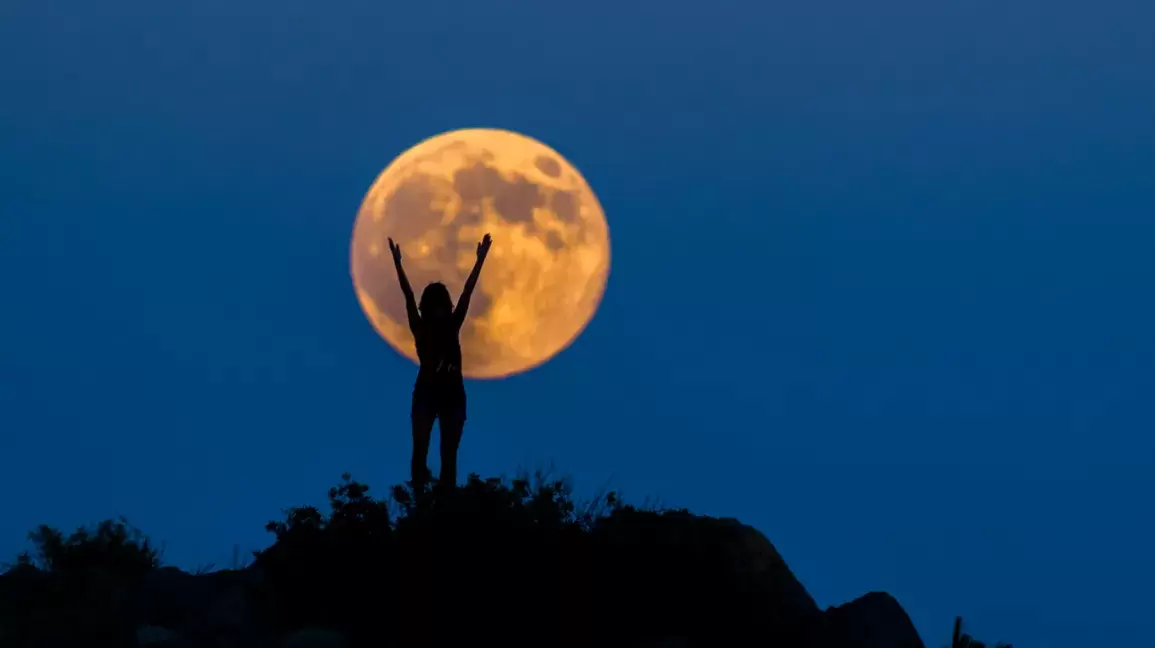

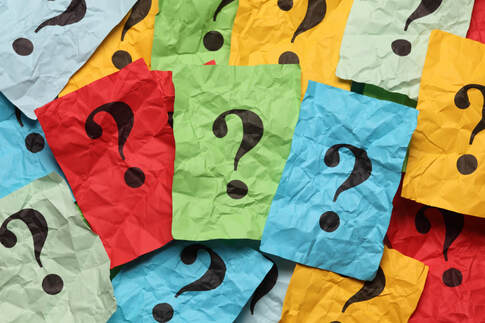

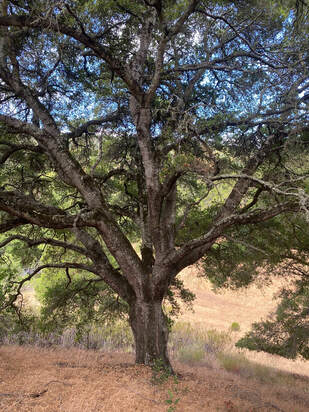
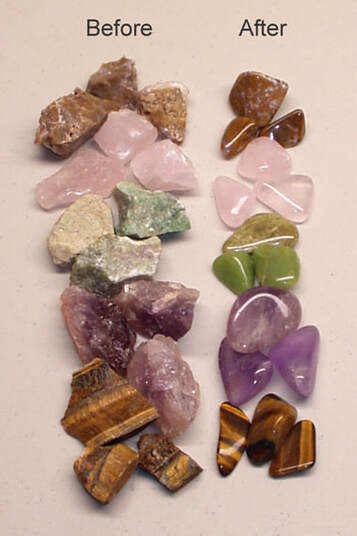
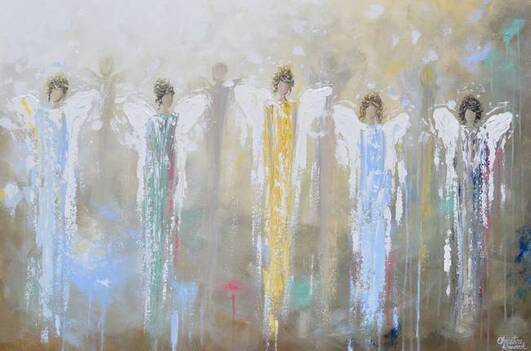
 RSS Feed
RSS Feed